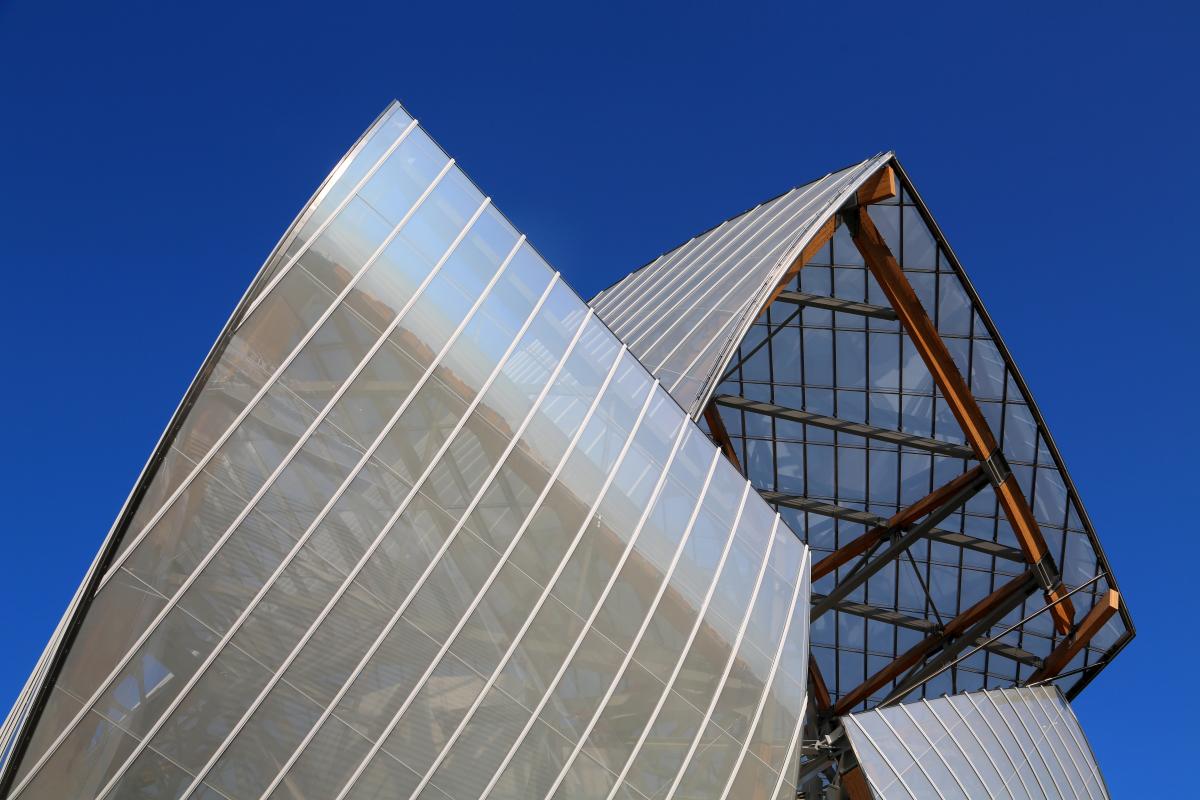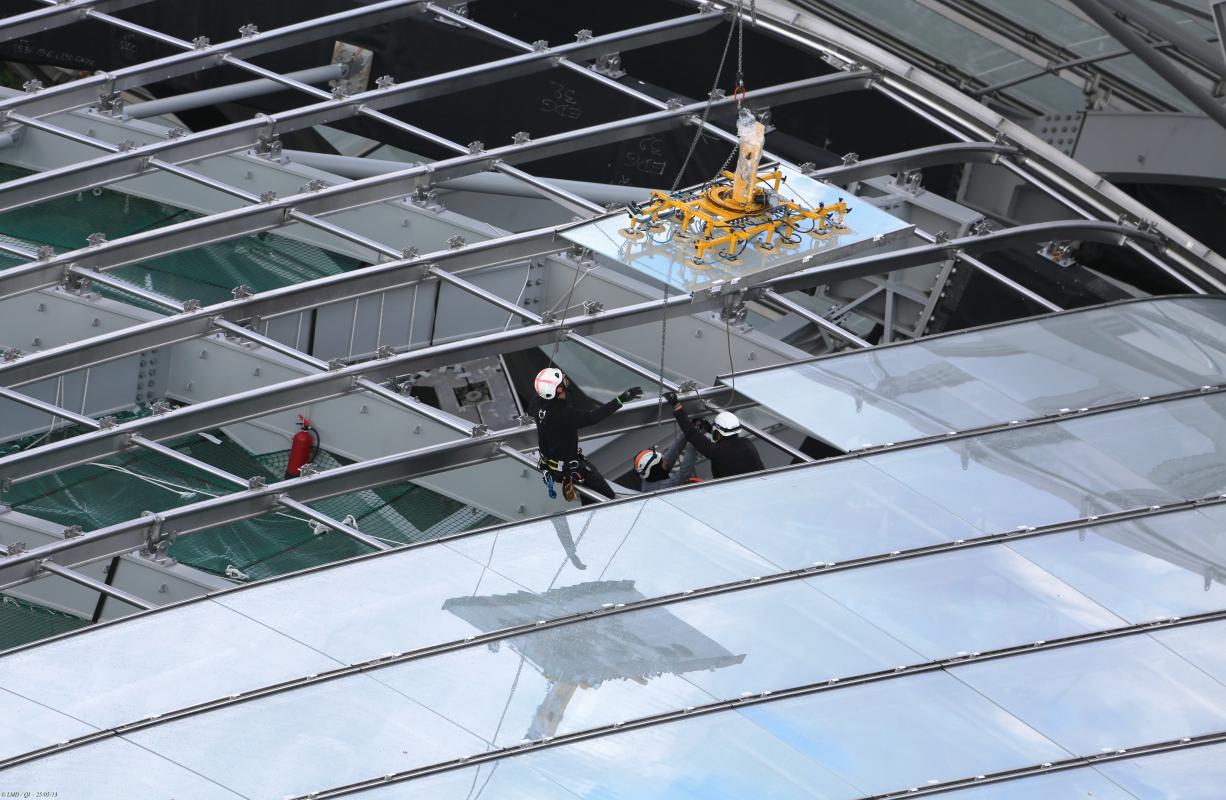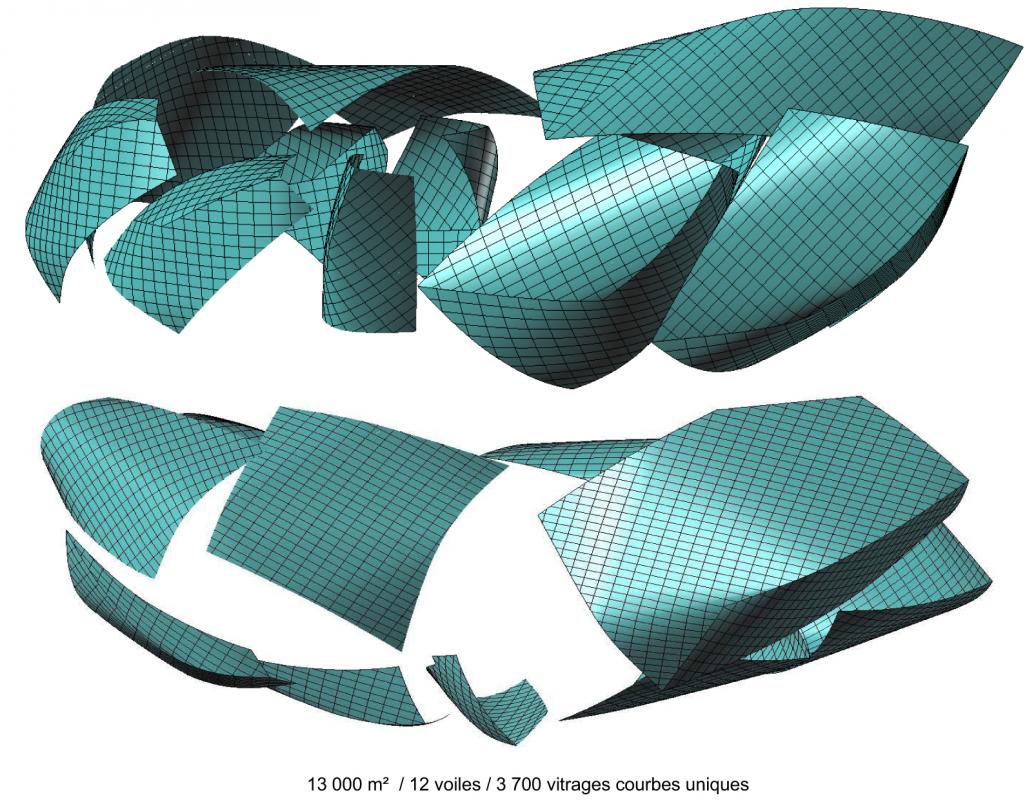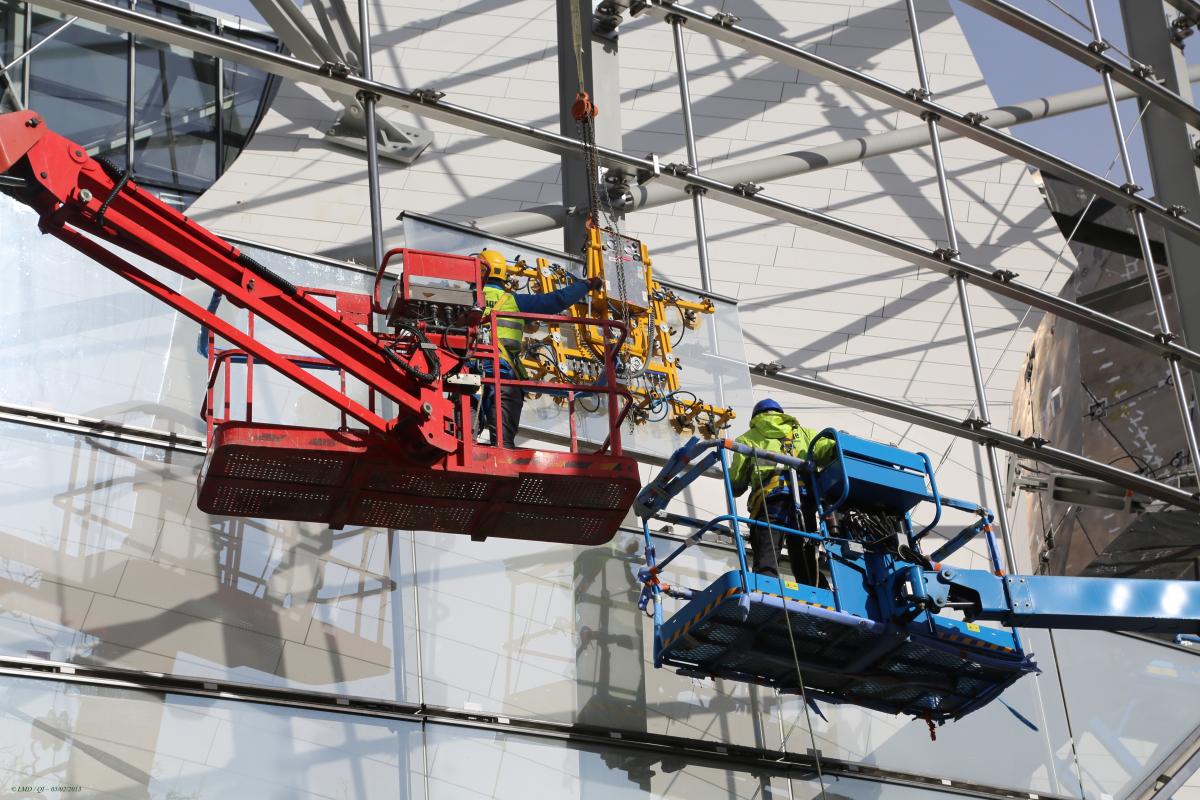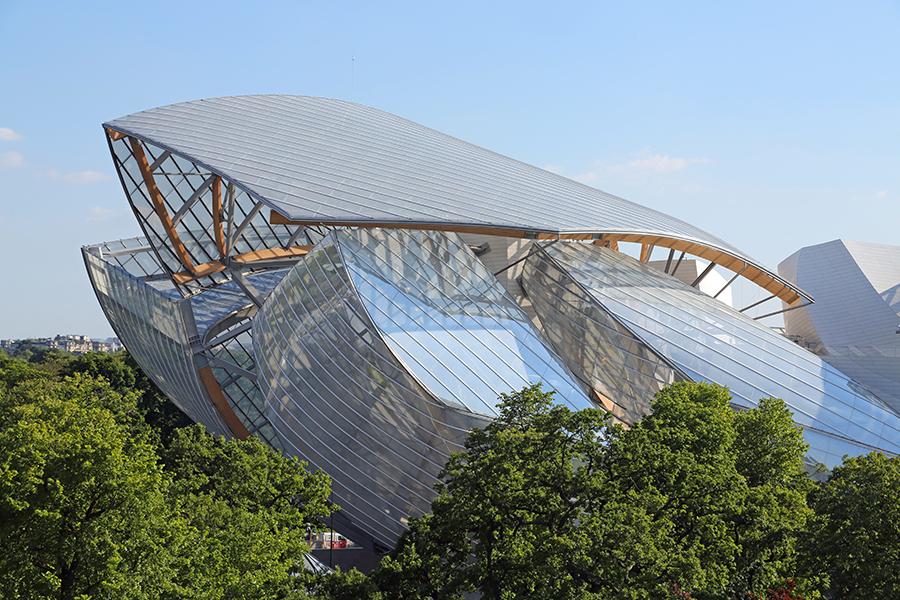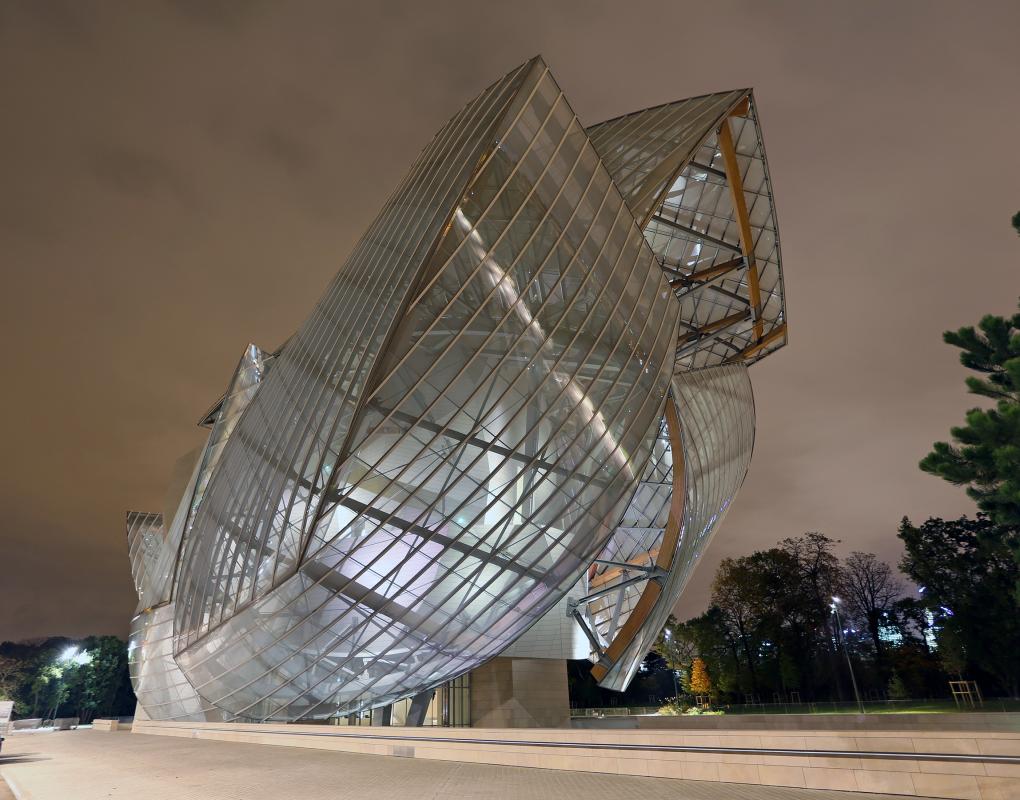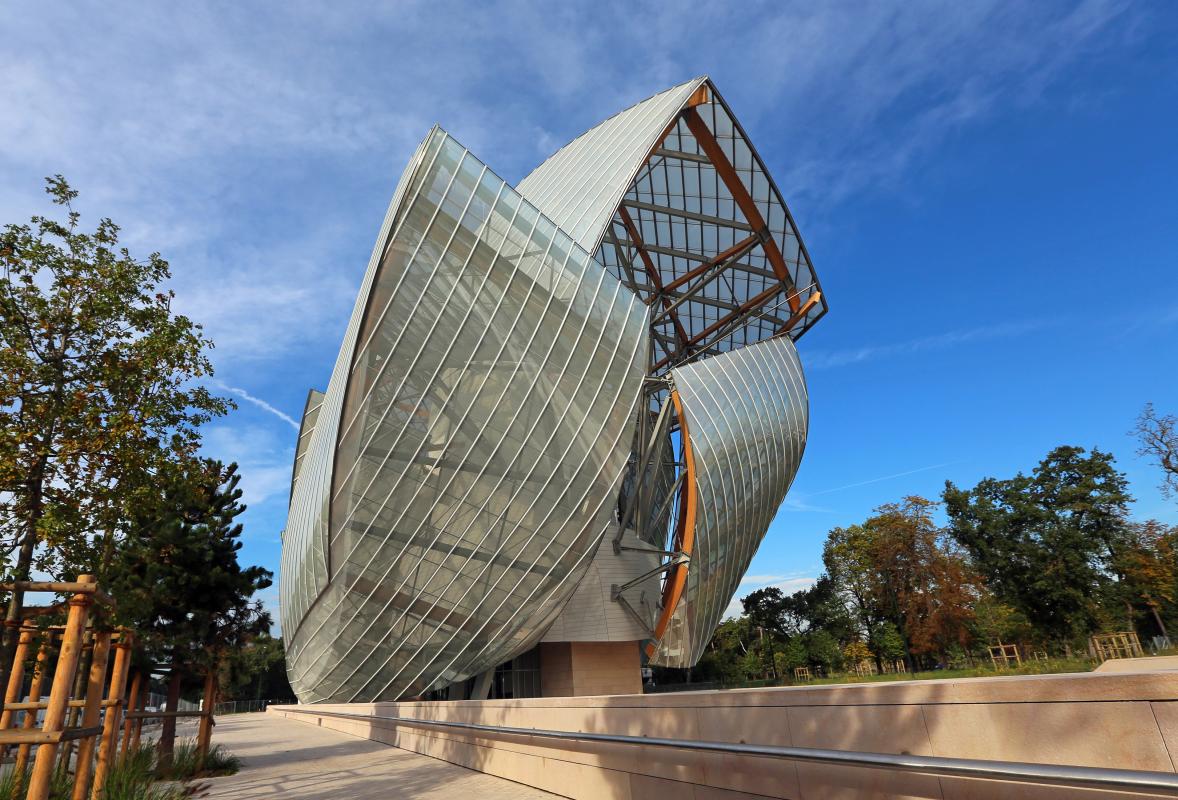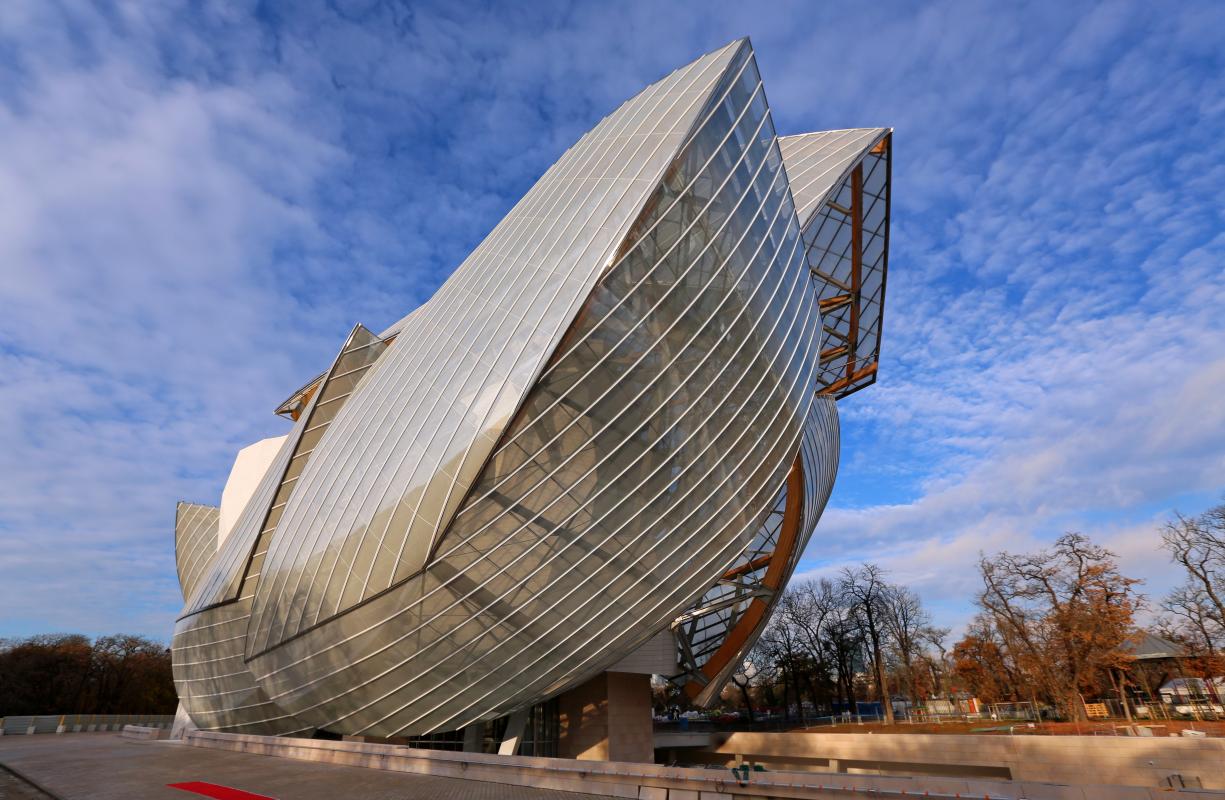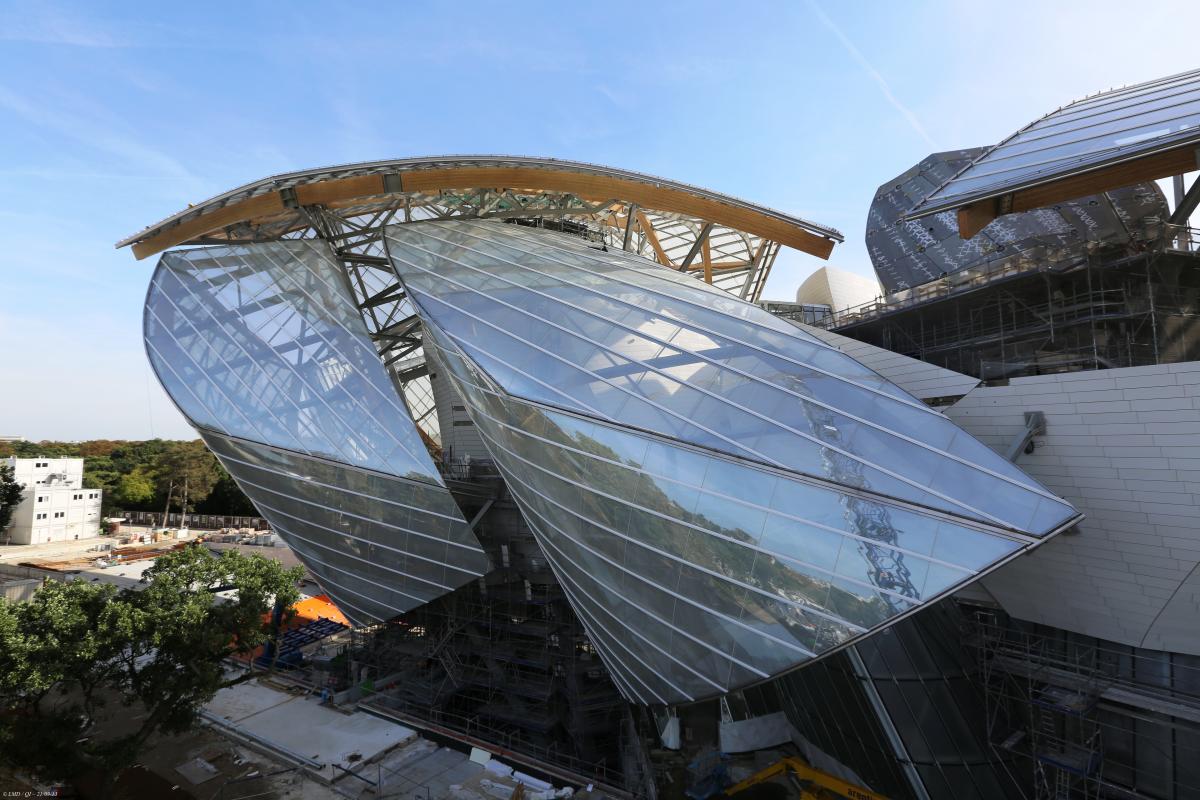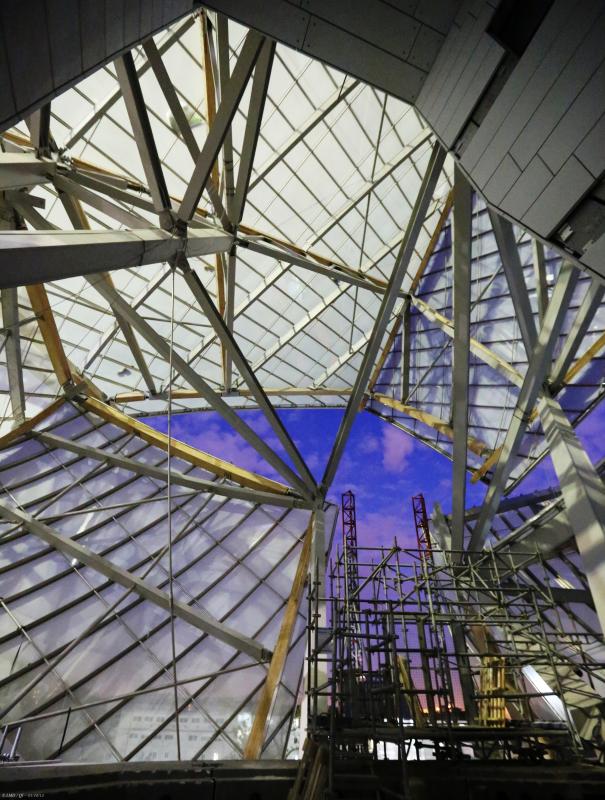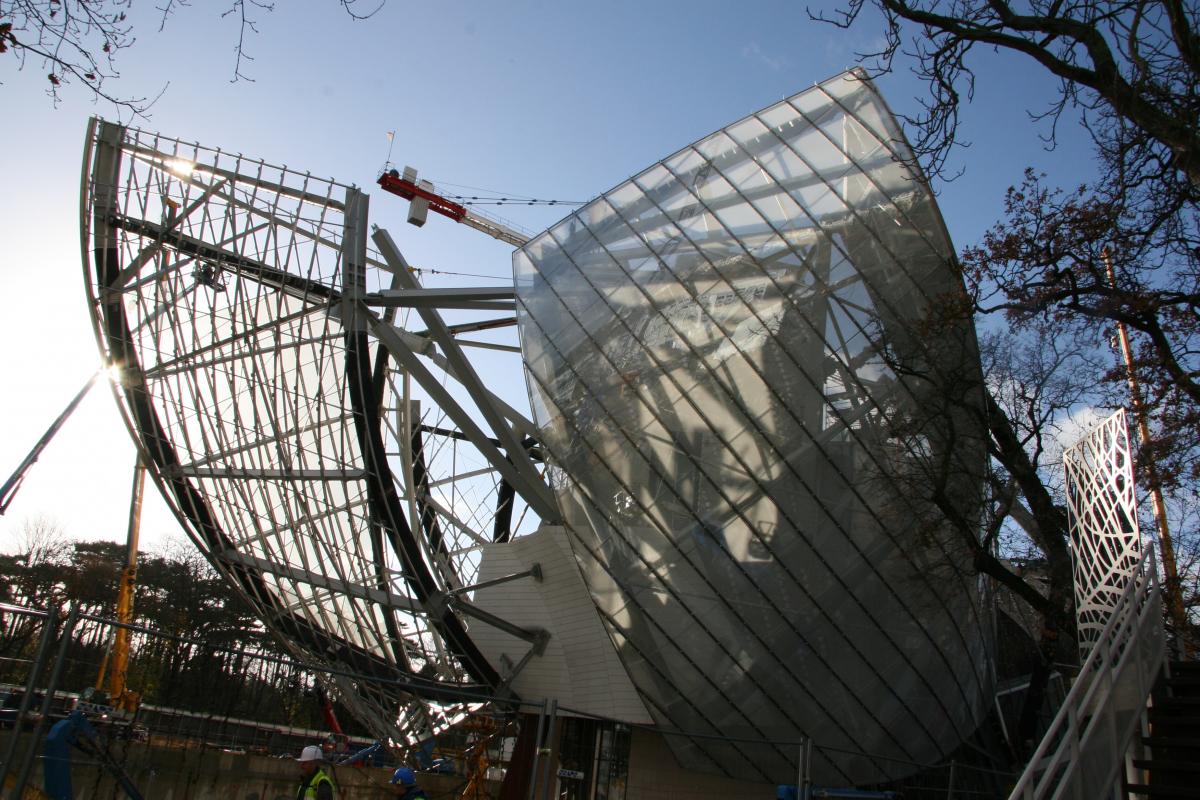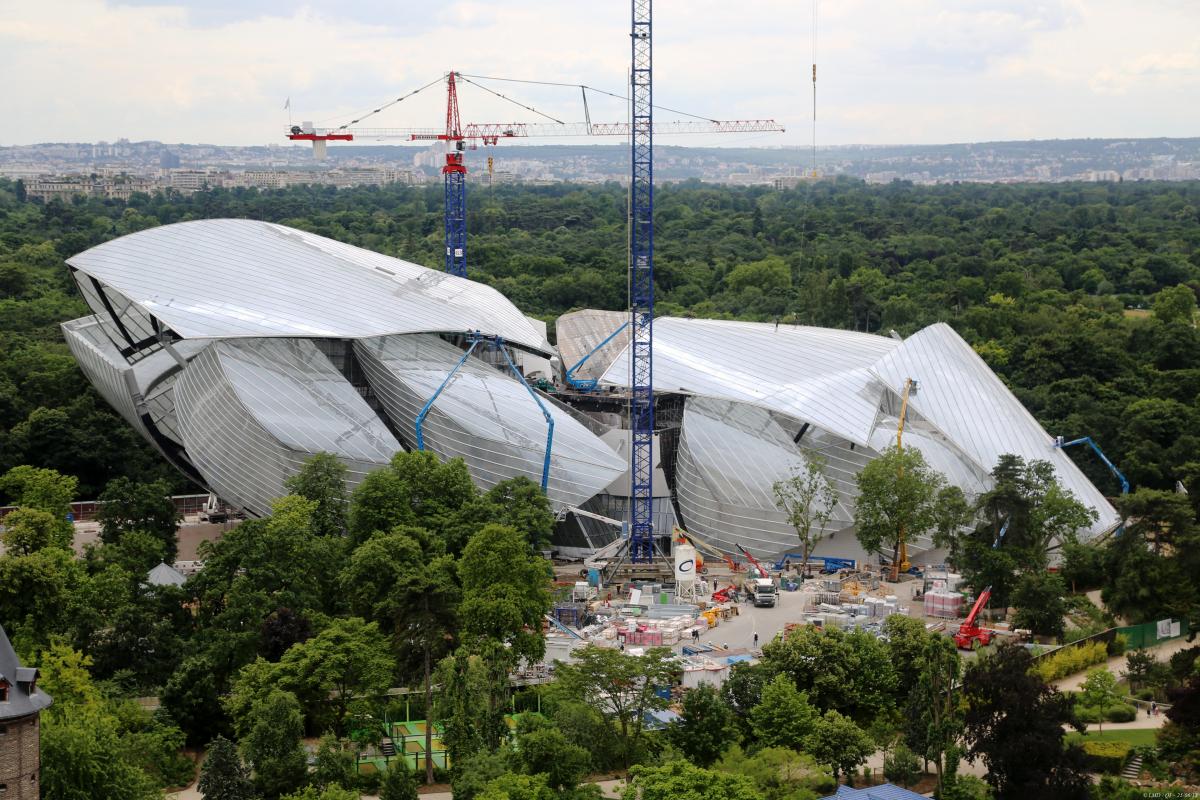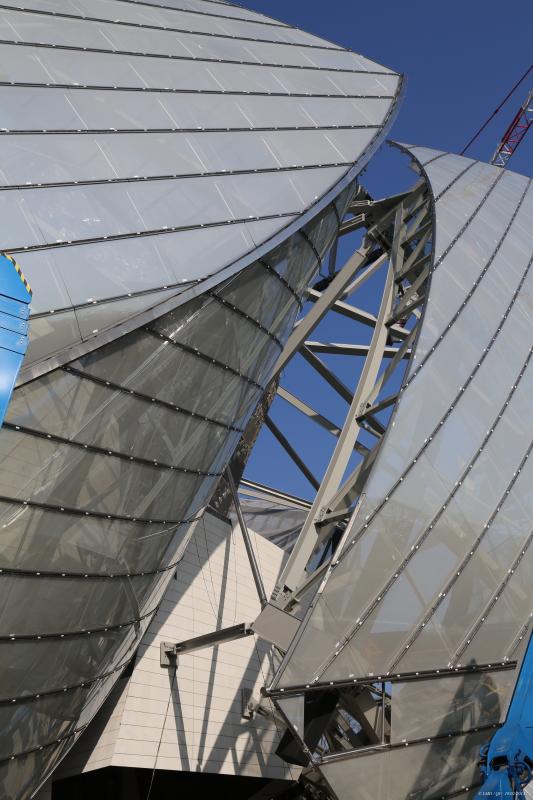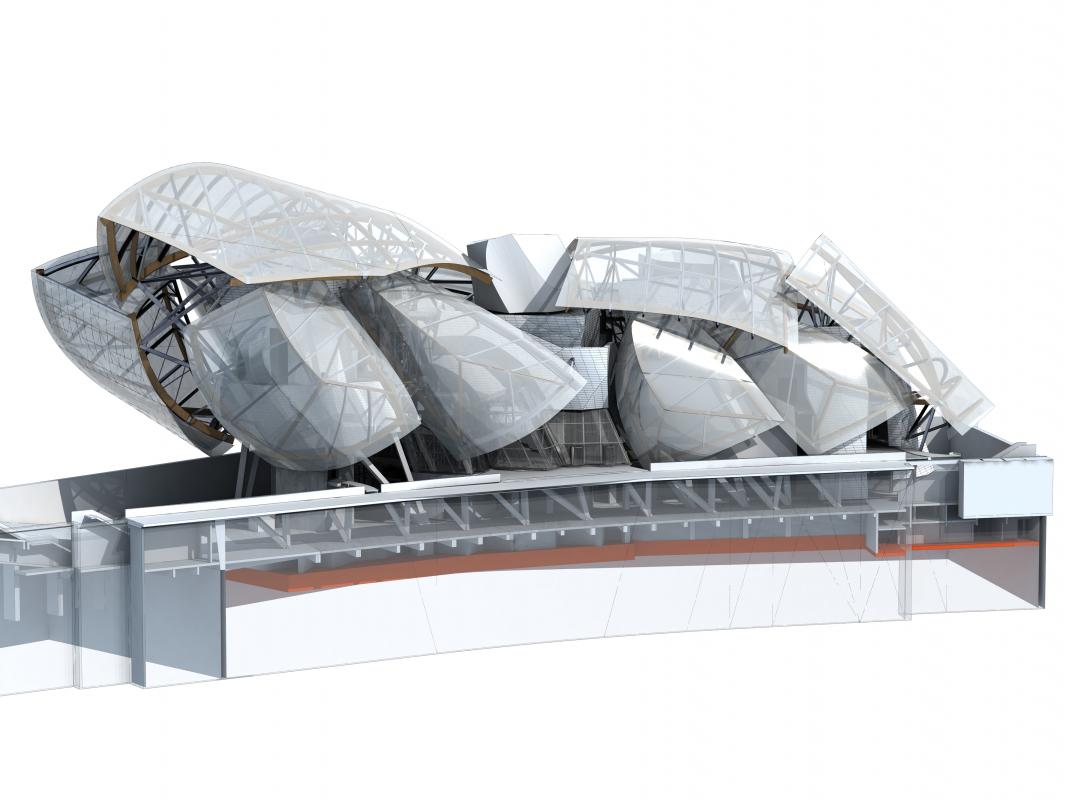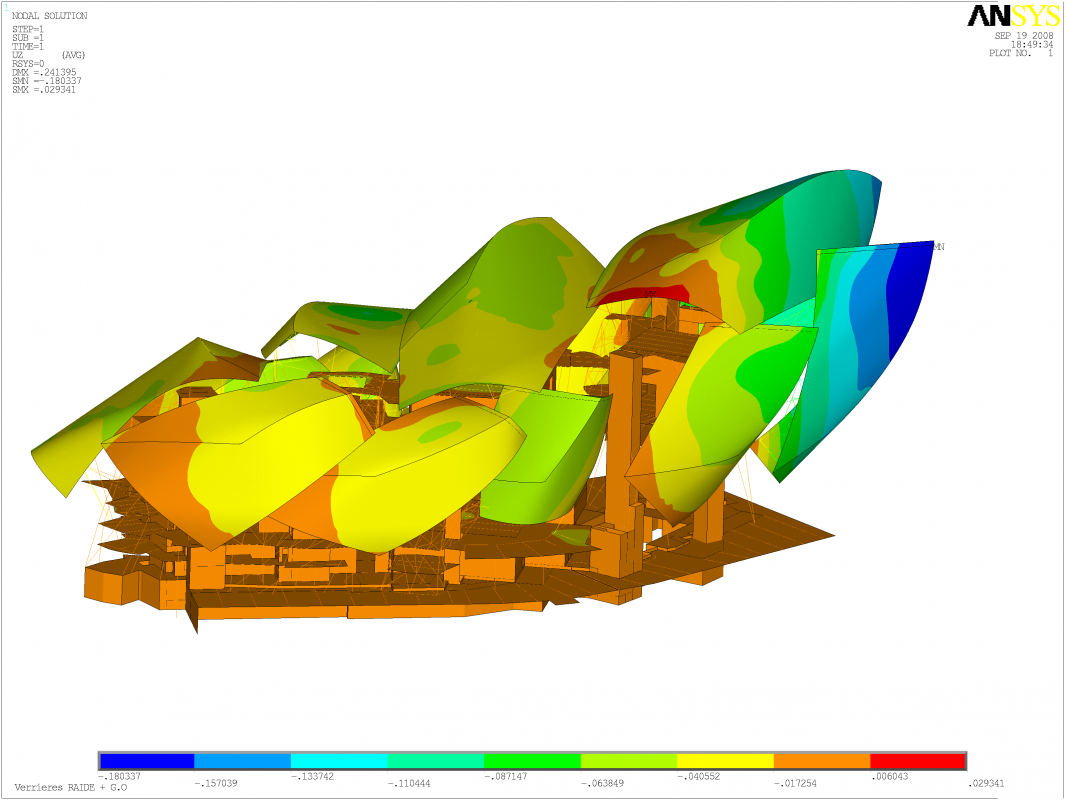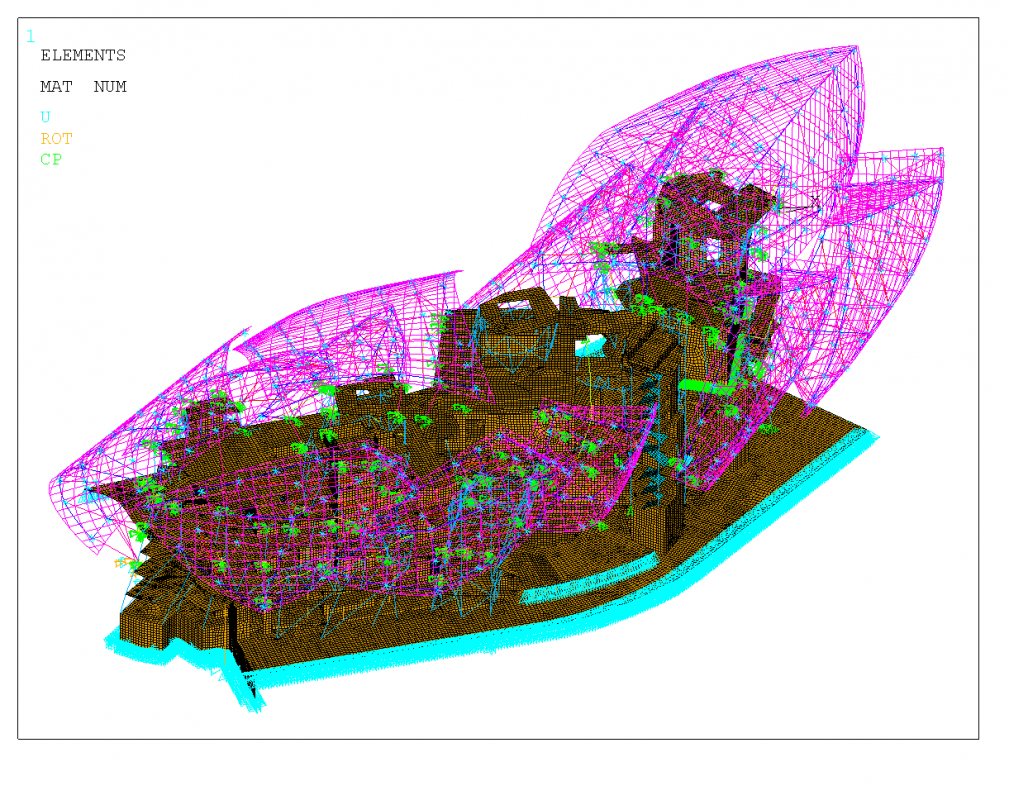Verrières - Fondation Vuitton
Glazed sails of the Fondation Louis Vuitton, Bois de Boulogne, Paris
The image of the Fondation Louis Vuitton is synonymous with the 12 glass sails the envelop it. Partially overlapping, they form complex and unexpected spaces between the sails and the body of the building, which provide surprising views out over the Bois de Boulogne and Paris. Very early in the project, the architect gave the image of a ship with full sails, highlighted by their stitching. This reference guided the technical design of the glass skin.
The surfaces of the sails are convex, curves that are variable at all points. For the layout of this type of surface, faceting them into triangular panels would have been the easiest solution. Nonetheless, the preference was for curved, quadrangular glazing, which gave the closest result to the intended architectural appearance. The surfaces were thereby cut up into 3527 glazed panels, with no repetition due of the absence of any geometric regularity.
Curving the glass is usually done by forming it on a mould. This process is long (8 hours) and requires a steel mould for each geometric variant, i.e. 3527 different moulds in this instance! So a different, more industrial system had to be found. We were aware of a new procedure for curving glass without a mould, whereby flat glazing is fed into an oven to be softened and then simultaneously hardened and shaped by mechanical action. The operation takes 10 minutes, significantly improving output. The parametres can be reprogrammed for each sheet, making it possible to adjust the angle of entry and the radius of curvature for each piece. This procedure thereby enabled the production of the glazed surface of the sails, at the cost of a slight geometric approximation, imperceptible to the eye. On site, the glazing was fixed at four points to the steel grid covering the surface. To allow for structural movement, the fixings were designed as sliding and articulated pieces, allowing the glazing to move freely in its plane.
The glazing panels consist of two sheets of extra-clear laminated glass, one of which is screen-printed with a density of 50% and covered with a slightly reflective metallic coat. This composition, combined with the curves of the sails, transforms the transparency of the glass into a material that catches light and colours in a way that is constantly evolving.

